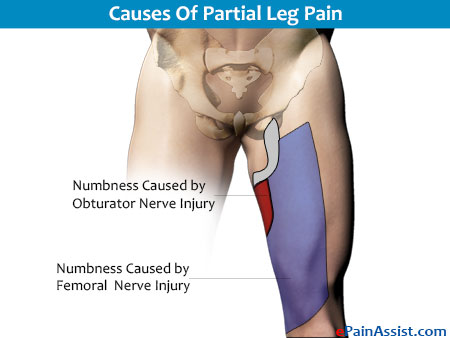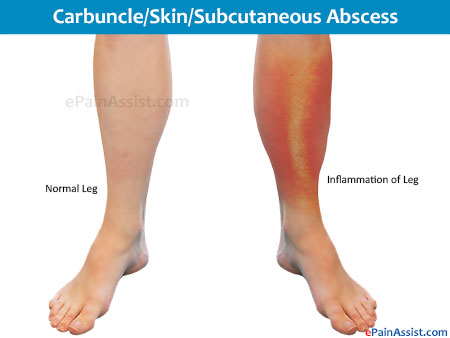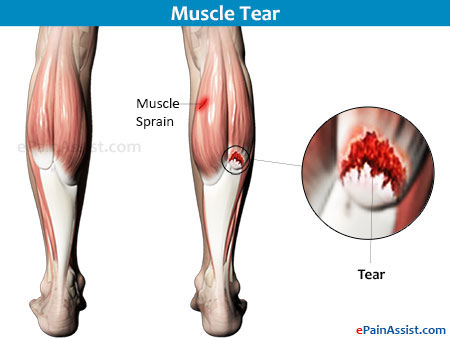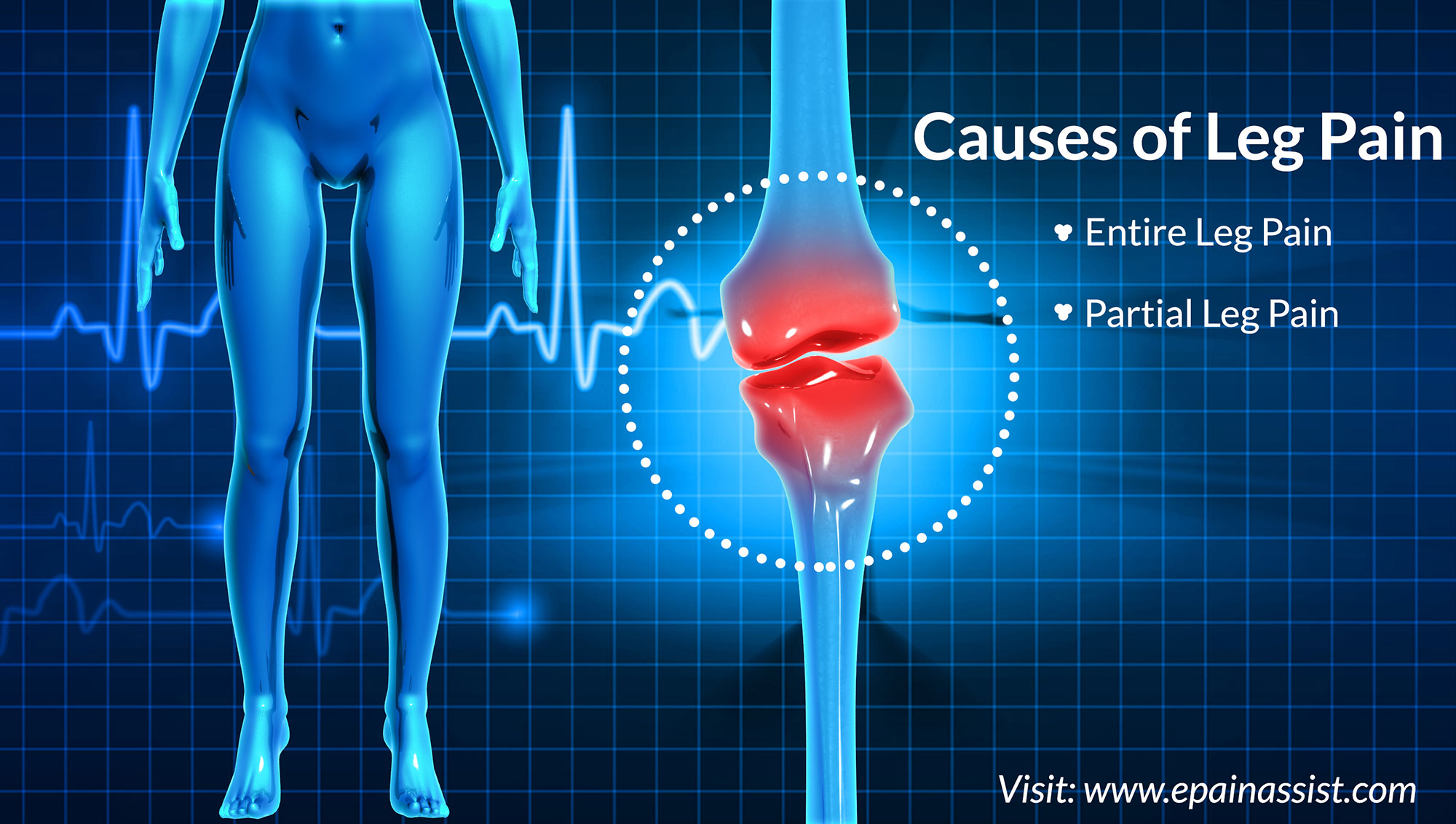Leg pain is the pain that passes along entire leg or section of the leg. Pain over entire leg is also known as sciatica pain. Lower leg pain is one of the common areas of chronic pain. Lower leg pain is initiated in skin, muscles, tendon, ligament, joint and bones. Leg pain is known as acute pain and lasts for 3 to 6 months. Most of the acute pain is sudden and severe in character. Pain is known as chronic pain when it pain lasts for more than 6 months.
Leg Pain Is Divided As Follows-
- Entire Leg Pain or Sciatica Pain– Cause of the pain is mostly in the vertebral column, spinal cord or retroperitoneal tissue in lumbar segment.
- Partial Leg Pain– Partial leg pain spreads over hip, knee and ankle joint as well skin and soft tissue between joint. Pain over joint or between joint is a segmental pain. Segmental pain is also known as partial leg pain.
Entire Leg Pain or Sciatica Pain-
- Sciatica pain is a common word used for leg pain.
- Pain is spread from hip joint to ankle and foot.
- Sciatica pain of entire leg is caused by irritation or pinch of lumbar 3rd, 4th, 5th and sacral S1 nerve.
- Pain may be caused by irritation or pinch of one or more than one nerve.
- Pain caused by pinch of third lumbar spinal nerve spreads below knee joint.
- Abnormality of 4th spinal nerve causes pain over entire leg and spreads up to ankle.
- Pinch of 5th spinal nerve causes pain of entire leg and spreads in feet and big toes.
- Pain caused by abnormality of S1 (sacral first) nerve spreads over entire leg, feet and outer 3 toes.
Causes of Entire Leg Pain or Sciatica Pain-
- Lumbar Disc Bulge– Lumbar disc bulge causes irritation or pinch of the lumbar spinal nerve. Pinch of third, fourth, fifth lumbar nerve and first sacral nerve causes severe acute stabbing pain in entire leg also known as sciatica. Pain is often associated with tingling, numbness or weakness of the lower leg.
- Lumbar Disc Herniation– Pain is similar as caused by lumbar disc bulge.
- Lumbar Spinal Stenosis– Spinal stenosis causes cauda equina syndrome. Pain is radicular pain spread in entire lower leg. Pain is associated with tingling, numbness, weakness, bladder (urine) and bowel (stool) incontinence (leakage).
- Foraminal Stenosis– Lumbar Spinal nerves passes out from spinal canal through spinal foramina or recess. Narrowing of foramina causes pinch of lumbar spinal nerve. Pinch or irritation of Lumbar 3,4 5 and sacral 1 nerve causes pain in entire leg and weakness in leg. Pain is also known as radicular pain. Pain is burning, severe and stabbing.
- Sciatic Nerve Injury– Sciatic nerve is formed by lumbar spinal nerve 4 and 5 (L4 and L5) as well as sacral nerve 1, 2 and 3 (S1, S2 and S3). Sciatic nerve injury is known as sciatica. Sciatica is also a term used for leg pain caused by selective nerve lesioning of nerve L4, L5 and S1. Sciatic nerve injury is caused by auto or work accident. Fall or sport injury also causes sciatic nerve injury resulting in leg pain or sciatica pain with tingling, numbness and weakness.

Partial Leg Pain
- Partial leg pain is the pain referred to partial leg.
- Partial leg pain up to thigh is caused by pinch or irritation of first or second lumbar spinal nerve.
- Pain over joint or between joint is considered as partial leg pain.
- Joint pain is described as hip joint pain, knee joint pain and ankle joint pain.
- Pain between joint is described as thigh pain, calf pain, shin pain and foot pain.
- Foot pain and toe pain can be from abnormalities of joint and soft tissue.
Causes Of Partial Leg Pain-
Partial Leg Pain Caused By Nerve Lesion-
- Femoral Nerve Injury– Femoral nerve injury is observed following penetrating injury of the front of the thigh. Femoral nerve injury causes severe pain in thigh radiating to the knee joint. Pain is associated with tingling, numbness and weakness over anterior skin of thigh and knee joint.
- Obturator Nerve Injury– Obturator nerve injury is rare and most of the injuries are observed following auto accident and sport injury. Obturator nerve injury causes numbness over inner side of thigh and weakness in adduction (bringing leg together). Pain is acute severe and stabbing in character.

- Tibial Nerve Injury– Sciatic nerve become popliteal nerve near knee joint and lies behind the knee joint. Popliteal nerve divides into tibial nerve and common peroneal nerve. Tibial nerve continues to ankle and becomes posterior tibial nerve. Injury of tibial nerve causes partial leg pain mostly spread over foot and ankle. Pain is sharp and stabbing in nature.
- Common Peroneal Nerve Injury– Common peroneal nerve gives branch to knee joint and legs below the knee joint. Common peroneal nerve injury causes stabbing and sharp pain in knee joint and lower leg below knee joint. Calf muscle weakness is also observed.
Partial Leg Pain Caused by Skin Diseases and Lesions
- Skin Infection Like Furuncle (Boil)

- Skin Abscess (Carbuncle)

- Skin Laceration
- Skin Penetrating Wound
Partial Leg Pain Caused By Muscle Diseases
- Pain spread over thigh, calf or foot.
- Muscle Spasm– Muscle spasm of thigh, calf and foot muscles causes severe squeezing and shooting pain.
- Muscle Sprain– Causes sustained painful contraction.
- Muscle Tear- Causes acute severe penetrating and stabbing pain.

- Muscle Inflammation or Myalgia- Causes severe burning pain.
Partial Leg Pain Caused By Diseases Of Tendon
- Segmental Pain– It is in lower leg mostly around hip, knee, ankle, foot and toes and is caused by tendon inflammation or injury.
- Tendon – Muscles end in bundle of tough fibrous tissue known as tendon. Tendon is attached to bone near joint.
- Tendon Pain– Most of the tendon pain is near joint and misdiagnosed as joint arthritis or joint sprain.
- Tendonitis– Inflammation of tendon is known as tendonitis. Tendonitis causes severe pain over tendon. Pain often radiates to underlying joint. Pain is severe with movement of the joint. Pain is burning and sharp, pain intensity increases with activities.
- Tendon Sprain– Tendon sprain is secondary to partial or complete tear of tendon. Pain is sharp, stabbing and severity of pain increases with joint movements.
- Tendon Dislocation– Muscles end in tendon and tendon is attached to bone. Dislocation of tendon causes abnormal bulging of the muscles with contraction. Pain is sharp and stabbing. Muscle contraction follows spasm of muscles and displacement of muscles from original position.
Causes of Lower Leg Pain
Lower Leg Pain Caused By Diseases Of Ligaments
- Ligament Disease– Pain is always at the joint. Lower leg segmental pain caused by ligament injury or disease is spread over hip, knee, ankle or joints over foot and toes.
- Ligament Sprain or Laceration- Tendon injury may cause tendon laceration. Laceration could be superficial or deep. Laceration causes severe throbbing pain. Laceration may or may not be associated with swelling of joint.
- Ligament Sprain or Tear– Pain is stabbing and severe. Pain is sudden and acute, always follows injury. Injury could be caused by domestic, auto or work accident and sports injury. Joint purple discoloration is observed with joint swelling because of joint hematoma.
- Ligament Inflammation– Ligament inflammation is often observed following penetrating injury of the joint. Inflammation of joint ligament follows joint infection. Pain is severe, burning type and increases with joint movement.
- Ligament Dislocation– Ligament dislocation is observed following sports injury. Twist of joint mostly ankle and knee causes over extension of flexion of the joint resulting in ligament dislocation or joint dislocation. Ligament tear and dislocation follows joint dislocation. Joint dislocation is possible following multiple ligament tear or dislocation. If force is not severe to cause dislocation then joint twist may result in ligament dislocation. Pain is severe and intense with joint movement. Pain is associated with joint swelling and purple discoloration of the skin. Pain is stabbing and sharp.
Lower Leg Inflammatory Joint Diseases Causing Lower Leg Pain
- Osteoarthritis– Joint inflammation causes burning and shooting pain over the joint. Joint affected by osteoarthritis are knee, hip and ankle joint. Osteoarthritis is common among elderly and affects knee and hip joint.
- Rheumatoid Arthritis (RA)– RA is inflammatory joint disease. Severe leg pain is on and often. Leg pain is associated with joint swelling and subluxation of the diseased joint. Rheumatoid arthritis is common in toes, foot and ankle joint. Deviation of the toes inward is observed secondary to ligamental dislocation or joint subluxation.
- Psoriatic Arthritis– Psoriatic arthritis is no common. Joint swelling and pain is observed in patients with history of psoriasis. Psoriatic arthritis causes burning and penetrating pain.
- Gout– Gout is caused by uric acid crystals deposit over synovial membrane and cartilage. Inflammation caused by uric acid deposits results in swelling of the joint. Increased secretion of synovial fluid and increased thickening of synovium, capsule and cartilages causes swelling of the joint. Pain is intense on touch and movement of the joint. Knee and ankle joint is most common joint affected by gout.
- Pseudogout– Pseudogout is less common than osteoarthritis and gout. Pseudogout is caused by calcium pyrophosphate deposit over synovial membrane, joint capsule and cartilages. Pain is associated with joint inflammation. Pain is increased with ambulation. Pain character is burning and sharp pain. Pain increases with joint movement. Patient often feels pain free period of several weeks.
Lower Leg Pain Caused By Joint Dislocation
Joints of lower leg are hip, knee, ankle, foot and joint of toes. Dislocation of any of the joint causes severe pain spread over the joint and referred to surrounding soft tissue. Partial leg pain is also associated with soft tissue injury. Joint dislocation associated with nerve injury causes spread of pain over entire leg because of nerve injury and partial over the joint because of dislocation. Pain caused by dislocation is acute and sudden in occurrence. Initial pain is intense and stabbing in nature. Later, pain becomes neuropathic and character of chronic pain becomes burning at rest and burning stabbing pain with activities.
Lower Leg Pain Caused By Fracture Of Leg Bones
Leg fracture is most often observed following serious injuries. Trauma or injuries are caused by sports accidents, domestic fall, car accidents and work injuries. Fracture causes partial or complete leg pain. Total leg pain is observed when sciatic nerve in injured with fracture of hip joint. Fracture of femur, tibia or fibula near knee joint causes popliteal nerve injury, which results in numbness and weakness of lower leg below knee joint. Fracture of tibia or fibula near ankle joint causes injury of posterior tibial nerve or common peroneal nerve. Nerve injury associated with bones around ankle joint causes numbness and weakness of foot.
Lower Leg Pain Due To Deep Vein Thrombosis (DVT)
Partial leg pain is caused by DVT. DVT may begin in distal vein in feet and ankle. Initially mild to moderate swelling and discoloration of the feet is observed. Surgery can reverse the symptoms and sign. Delayed medical or surgical treatment can cause permanent tissue damage resulting from gangrene. Burning, sharp and stabbing pain is spread over lower leg below the knee joint.
You should consult family physician if leg pain continues after 48 hours. Leg pain can be serious or routine pain. Primary care physician may advise following test after initial examination e.g. X-Ray, MRI, Doppler studies and blood test. Patient may be referred to specialist depending on outcome studies.
- Mayo Clinic: “Leg Pain”: https://www.mayoclinic.org/symptoms/leg-pain/basics/definition/sym-20050784
- Cleveland Clinic: “Leg Pain”: https://my.clevelandclinic.org/health/symptoms/17744-leg-pain
Also Read:
- Lateral Foot Pain or Pain on the Outer Side of the Foot!
- Foot Pain & Its Anatomical Distribution, Causes of Foot Pain
- Top of the Foot Pain: Statistics, Symptoms, Causes, Treatment, Exercises
- Can Leg Pain Be A Sign Of Heart Problems & What Are The Symptoms Of A Blocked Artery In Your Legs?
- What Are The 8 Common Causes Of Leg Pain & How Can I Get Rid Of It?
- What Can Cause Pain in the Legs with Sitting or Sleeping?

